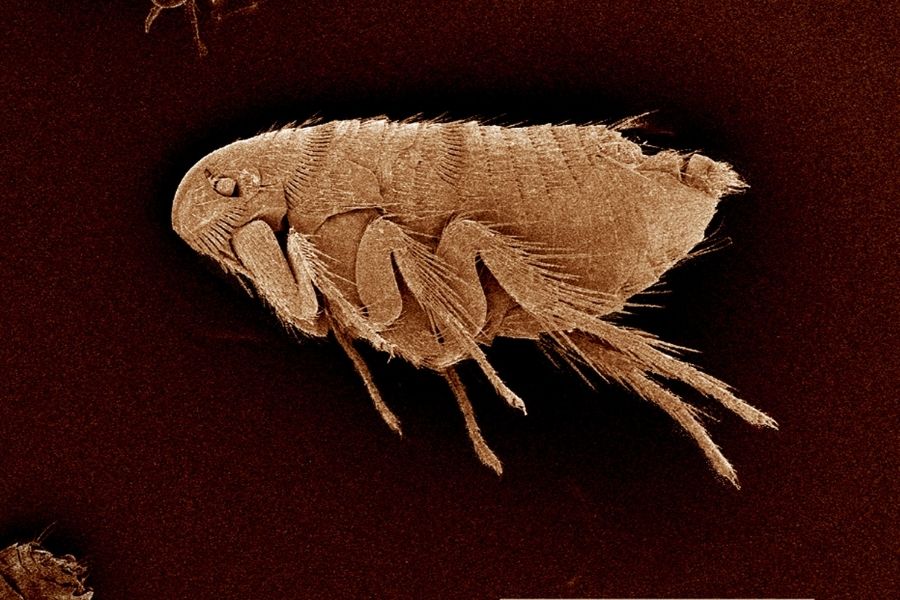PEST CONTROL
This insect’s chief fame is attributed to their ability to transmit disease. The body of the flea is well adapted to its parasitic lifestyle. Adults are dark in color with flattened abdomens. On each side of the body, bristles that point backwards facilitate movement forward through fur, hair, or feathers. Fleas are wingless creatures, with strongly developed legs. Their hind legs are especially adapted for jumping. The mouth of the flea is designed to feed on the blood of mammals and birds.
FLEAS
Control:
Foremost, keep the home or facility as sanitary as possible. Another facet of flea control includes the screening of vents to keep rats, opossum, squirrels and other flea ridden rodents out from under the foundation. Many times when dogs and other pets are allowed to seek shade underneath the house on a hot summer day, a rapid buildup of a heavy concentration of fleas may become more prominent. Be sure to wash pets’ bedding and vacuum areas frequented by your pet. Safe application of EPA-registered pesticide for fleas is extremely fundamental to controlling these pests.
- Capable of destruction
- Can Be removed Immediately
- $ Consultation Required
A flea’s bite can transmit diseases that are potentially dangerous to humans. The most alarming being the bubonic plague, otherwise known as the “Black Death” of the Middle Ages. Even though we are not at serious risk of this particular disease, fleas are common culprits of skin lesions found on humans. Some individuals become accustomed to flea bites and are not disturbed by them. Others are extremely irritated by the presence of fleas, let alone their painful bites. The bite of a flea varies with each species and with each person bitten.
Tapeworms are a common problem in cats and dogs, is attributed to the flea taking host of such animals- with humans susceptible to infection as well. There have been reports stating that 24 percent of dogs and 30 percent of cats are infected with tapeworm. According to these experts, the incidence of tapeworm infestations found in children may be more frequent than suspected.
What they say about our services

There are many other pests and wildlife that we treat. This includes beetles, bees and wasps, silverfish, centipedes, crickets, mites, snails and slugs, stink bugs, weevils, snakes, and many more.

